The article “Achaemenid Religion: Lighting the Spirit of Ancient Persia” is written by Caleb Strom and published in Ancient Origins on October 13, 2019. Kindly note that the version printed below has been slightly edited – the hyperlinks inserted below are different from the original version that appears in Ancient Origins. In addition, please note that excepting five images, all other images and accompanying captions do not appear in the original version posted in Ancient Origins.
For more on this topic see:
====================================================================================
The Achaemenid Persian Empire is historically important for the Western world because of the influence of the Persian civilization on both the ancient Greeks and the ancient Jews. Because of this influence, Western civilization is indebted to the Achaemenids in many ways. Religion is no exception. Both Hebrew prophets and Greek mystics show influence of Persian religious ideas.
Historical Background
Most of our knowledge of the Achaemenids comes from ancient Greek writings. According to traditional sources, the Achaemenid Empire was established around 550 BC when Cyrus, king of Persia, soon to be Cyrus the Great, led a Persian revolt against the Median ruler, King Astyages. After defeating the Medes, Cyrus went on to conquer the kingdom of Lydia in the 540s BC in Asia Minor and Babylon by 539 BC. Cyrus’s successor, Cambyses, expanded the empire further, occupying Egypt in 525 BC. In doing this, Cambyses defeated a former ancient superpower.
Video lecture on the establishment of the Achaemenid Empire by Cyrus the Great (Source: Khan Academy in Youtube).
The Achaemenid Empire was further organized and consolidated under King Darius I (522-486 BC) who established the system of satrapies. The empire was divided up into territorial and tax districts, each one controlled by an official called a satrap.
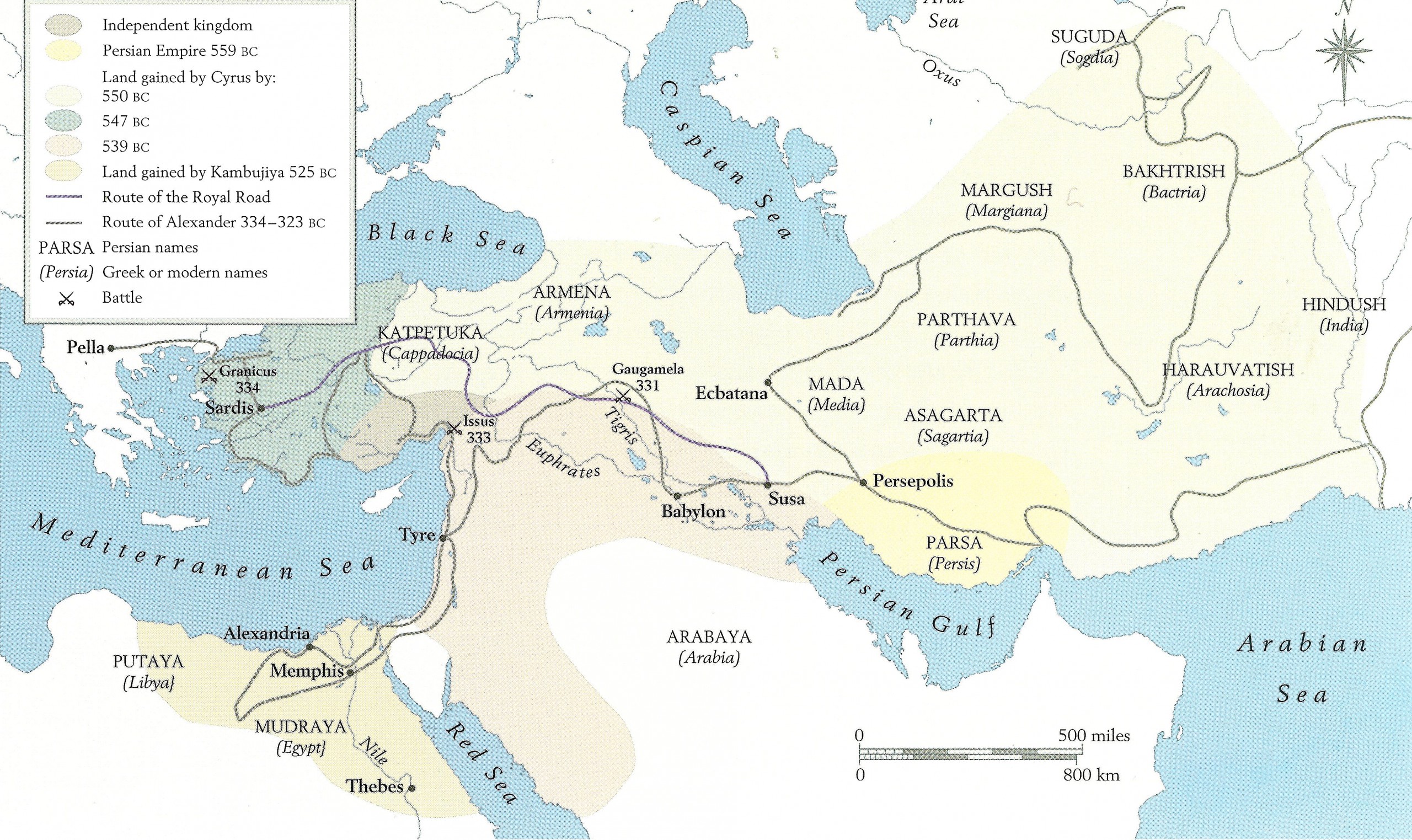
Map of the Achaemenid Empire drafted by Kaveh Farrokh on page 87 (2007) for the book Shadows in the Desert: Ancient Persia at War-Персы: Армия великих царей-سایههای صحرا-:
It reached its largest territorial area under King Xerxes I (486-465 BC), Darius I’s successor. Xerxes is also famous for having been king of Persia during the Battle of Thermopylae against the Spartans, and the subsequent sacking of Athens in 480 BC.
The Empire did not continue to expand after the reign of Xerxes I, although it remained mostly intact until the last Achaemenid king was defeated by Alexander at the Battle of Gaugamela in 331 BC.
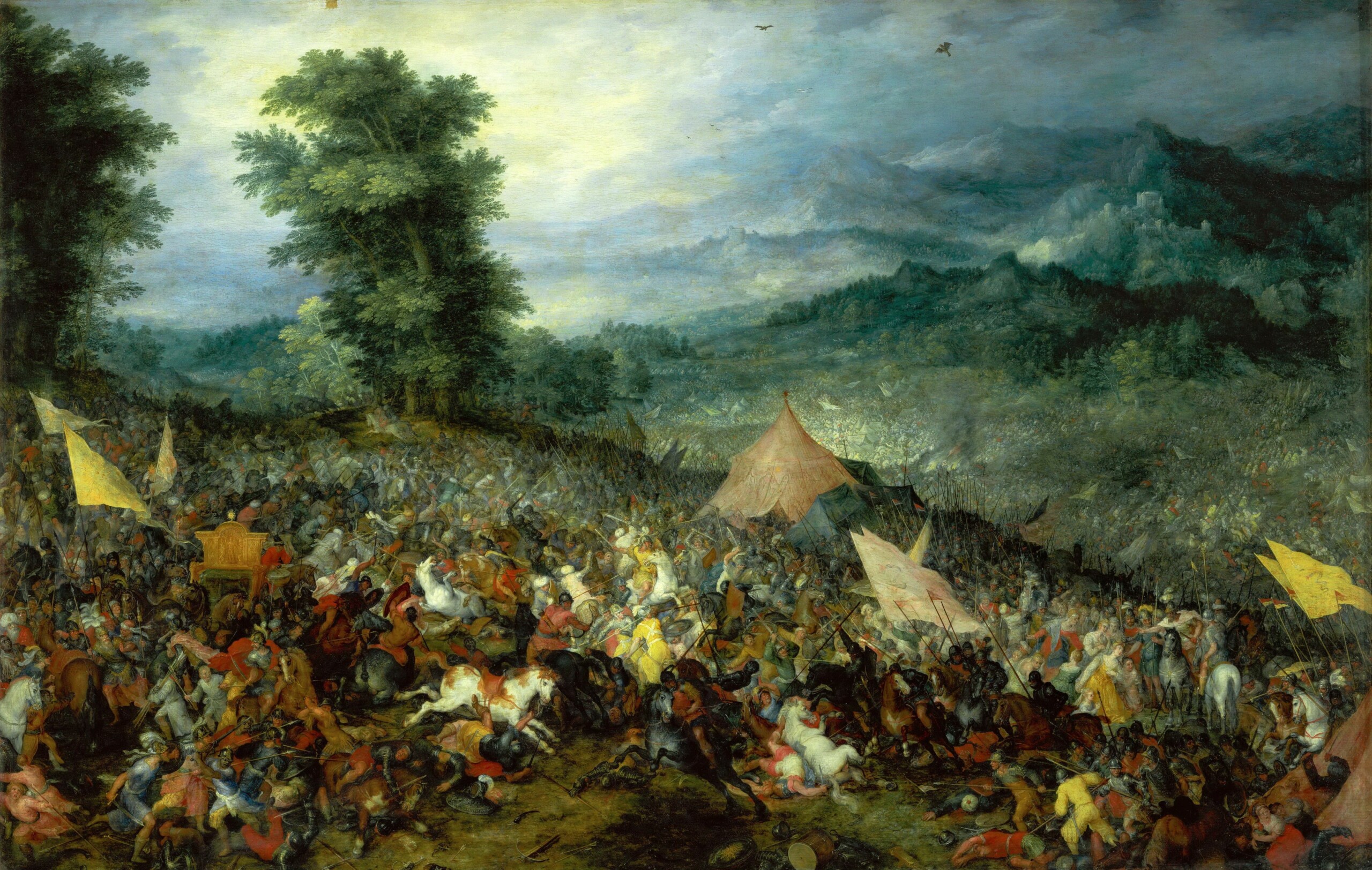
An artistic rendition of the “The Battle of Gaugamela” made in 1602 by Jan Brueghel the Elder (Source: Public Domain).
Religion of the Achaemenid Rulers
The religion of the Achaemenid kings is a controversial and hotly debated topic in scholarly circles. The traditional view is that the Achaemenids were Zoroastrians. There is certainly evidence of Zoroastrian influence. Both Darius I and Xerxes I, for example, made proclamations stating that they had the favor of Ahura Mazda, the supreme God in Zoroastrianism, to bring justice and order to the world.
On the other hand, the kings also behaved in ways which contradict the idea that they were devout Zoroastrians. The Achaemenid kings all mentioned respect for deities besides Ahura Mazda. For example, Cyrus the Great renovated temples for Mesopotamian gods , taking on the role of a typical Mesopotamian monarch, which included piety towards the gods. King Cyrus is also recorded in the Bible as acknowledging the authority of the Hebrew God Yahweh, though this may have been based more on a Jewish interpretation of his words.
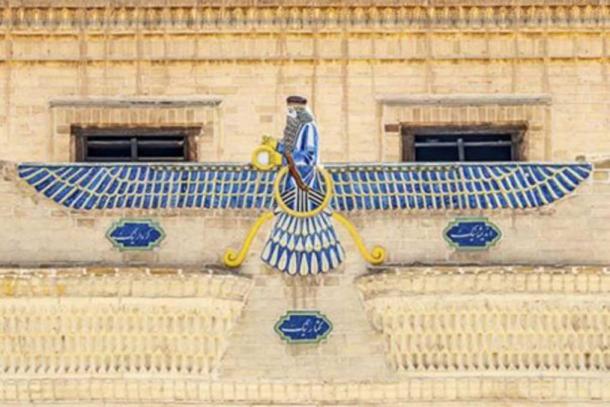
A depiction of Ahura Mazda on the roof of the Museum of Zoroastrian History in the city of Yazd in Iran (Source: Ancient Origins).
On the other hand, the Achaemenid kings may simply have been showing respect to the religious beliefs of their subjects, as opposed to seeking the favor of gods other than Ahura Mazda, in order to increase their popularity. It is also not clear that the early Zoroastrians believed that Ahura Mazda was the only deity as opposed to simply being the supreme God.
Although it is uncertain if they were Zoroastrian, they clearly respected the Zoroastrian religion and fostered it within their empire.
Ancient Iranian Religion and the Achaemenids
Achaemenid Persia is famous for being one of the first multicultural superpowers in the ancient world. It was also the largest empire that western Asia had seen at that point, stretching from Anatolia and Egypt in the west to India in the east.
Because the Achaemenid Empire was multicultural and multi-religious, the gods of the ancient Egyptians, Babylonians, Jews, and many other cultural groups were worshiped within its borders.
In the Persian heartland, however, the ancient Iranian religion continued to be practiced. The ancestors of the Persians first entered the Iranian plateau from the steppes of central Asia sometime in the second half of the 2nd millennium BC. They were originally pastoralist nomads who mainly raised cattle, sheep, and goats. They also raised horses which they used for riding and pulling chariots.
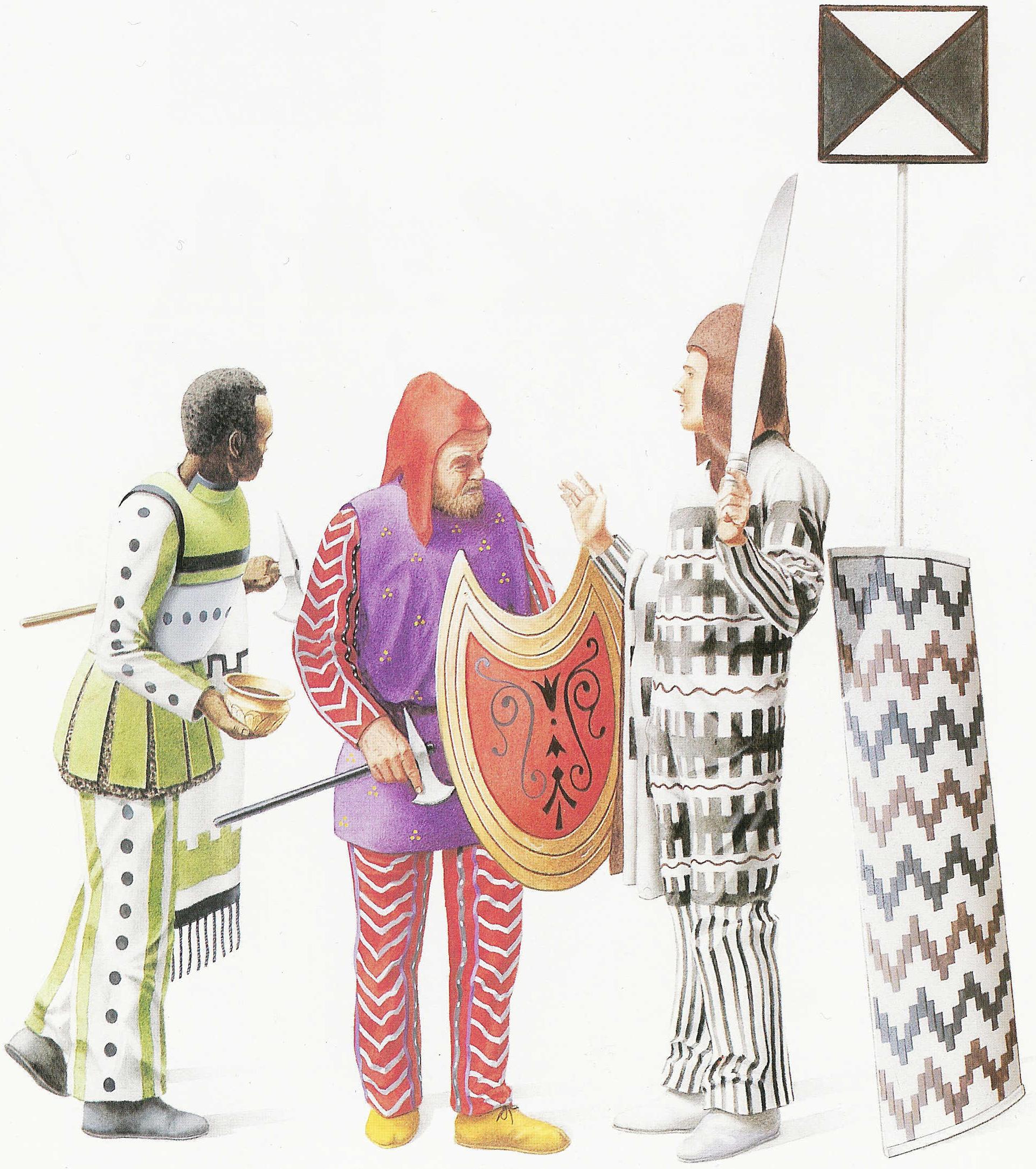
Reconstruction of an Ethiopian marine (left), Iranian warrior (centre) and Iranian spearbearer by Nick Sekunda and Simon Chew (Nick Sekunda, The Persian Army, Osprey Publications, 1992, Plate C; Paintings by Simon Chew).
Ancient Iranian Religion
By the Achaemenid period, ancient Iranian society appears to have been divided into four social classes: nobles, priests, farmers and herdsmen, and artisans. By the early 1st millennium BC, they had become more sedentary and focused on agriculture. Their pastoralist legacy, however, remained with them. This is seen in the patriarchal nature of their religion.
In this description, many terms and concepts will be mentioned that are prevalent in the modern religion of Zoroastrianism. It should be noted, however, that these concepts as they existed in the ancient, pre-Zoroastrian religions of Iran don’t necessarily correspond to the concepts as they currently exist in modern Zoroastrianism. As a result, their descriptions in this article may differ from modern Zoroastrian thought.
The ancient Iranian religion has common origins with the Vedic religion , and both probably go back to the proto-Indo-European religion. Ancient Iranian religion differed from most Middle Eastern religious traditions in that the ancient Iranians generally did not make graven images of their gods and they also did not build temples for them. The Iranians worshipped out in the open.
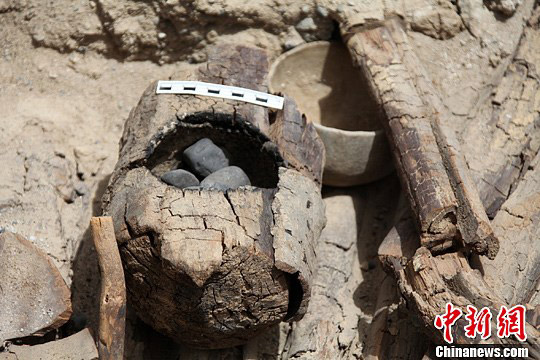
Archaeologists in Northwest China’s Xinjiang Uygur Autonomous Region have discovered major Zoroastrian tombs, dated to over 2,500 years ago. (Caption and Photo Source: Chinanews.com). As noted in the China News report: “This is a typical wooden brazier found in the tombs. Zoroastrians would bury a burning brazier with the dead to show their worship of fire. The culture is unique to Zoroastrianism…This polished stoneware found in the tombs is an eyebrow pencil used by ordinary ladies. It does not just show the sophistication of craftsmanship here over 2,500 years ago, but also demonstrates the ancestors’ pursuit of beauty, creativity and better life, not just survival. It shows this place used to be highly civilized”. For more on this topic see … “Archaeologists uncover Zoroastrian Links in Northwest China” …
Fire was considered sacred , a connection between humanity and the divine. It was also believed to be a god in of itself. Because of this, fire played an important role in the ancient Iranian religion.
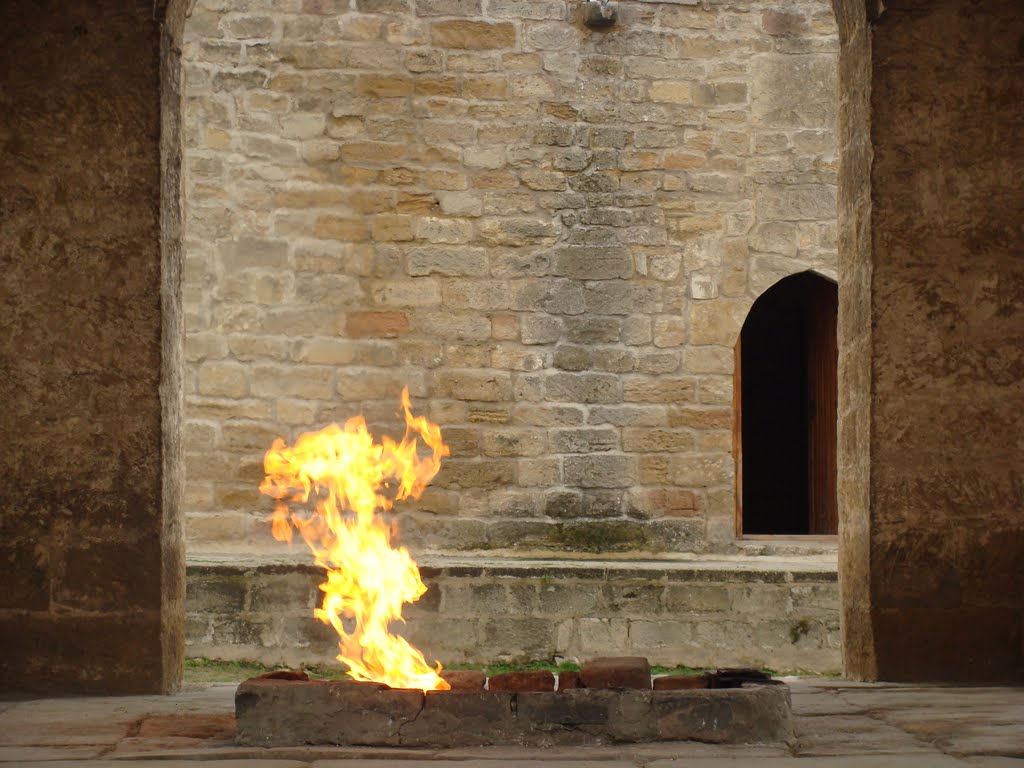
The main fire altar at the Atash-kade (Zoroastrian Fire-Temple) of Baku in the Republic of Azerbaijan (known as Arran and the Khanates until 1918) (Picture Source: Panoramio). This site is now registered with UNESCO as a world heritage site. For more see … “Zoroastrian and Mithraic Sites of the Caucasus” …
Ancient Iranian religious practices varied considerably and did not consist of many common rituals. One important ritual that was central to ancient Iranian religion, however, was the ritual meal known as yazna. Yazna was seen as a ritualized formal banquet . The hosts of the banquet were human and the guest was divine. It was believed that human worshipers in the ceremony were inviting the deity to a feast. The purpose of the meal was communion with the divine either to make specific requests or as an act of piety.
An important part of this ritual meal was the consumption of Houma. In ancient Iran, Houma was considered to be both a sacred substance and a divinity in of itself. The original plant from which the drink was extracted in ancient practice is a subject that is still debated by scholars, but it has been suggested that the substance of the ancient drink might have been a hallucinogen.

A gymnosperm shrub, the source of ephedrine – one of the possible sources of Soma-Houma (Source: Ancient Origins).
Like other ancient religious traditions, the ancient Iranian religion didn’t have an organized theology. Nonetheless, the ancient Iranians generally believed that the gods could be divided into two categories of divinity, the ahuras and the daivas. The daivas were considered to be lesser gods. Some Iranian traditions, including Zoroastrianism, considered them to be demons. The ahuras were higher gods that governed the universe.
Even before the rise of true Zoroastrianism in the latter part of the Achaemenid period, ancient Iranian religion contained a strong dualistic element. They believed that not only humans, but also gods and the animal kingdom had the freedom to make moral choices. They believed in an ethical dualism where every good thing had an evil counterpart.
The pantheon was divided between the benevolent gods and the malevolent demons. There were also good animals and “noxious” creatures. There were even different words for the hand of a righteous person and an evil person.
The universe, in ancient Iranian thought, was governed by Ahura Mazda, who appears to have governed the world through a lesser deity, Spenta Mainyu. The name Spenta Mainyu means beneficent spirit. In some ancient Iranian texts , Spenta Mainyu is paired with Angra Mainyu, the evil spirit.
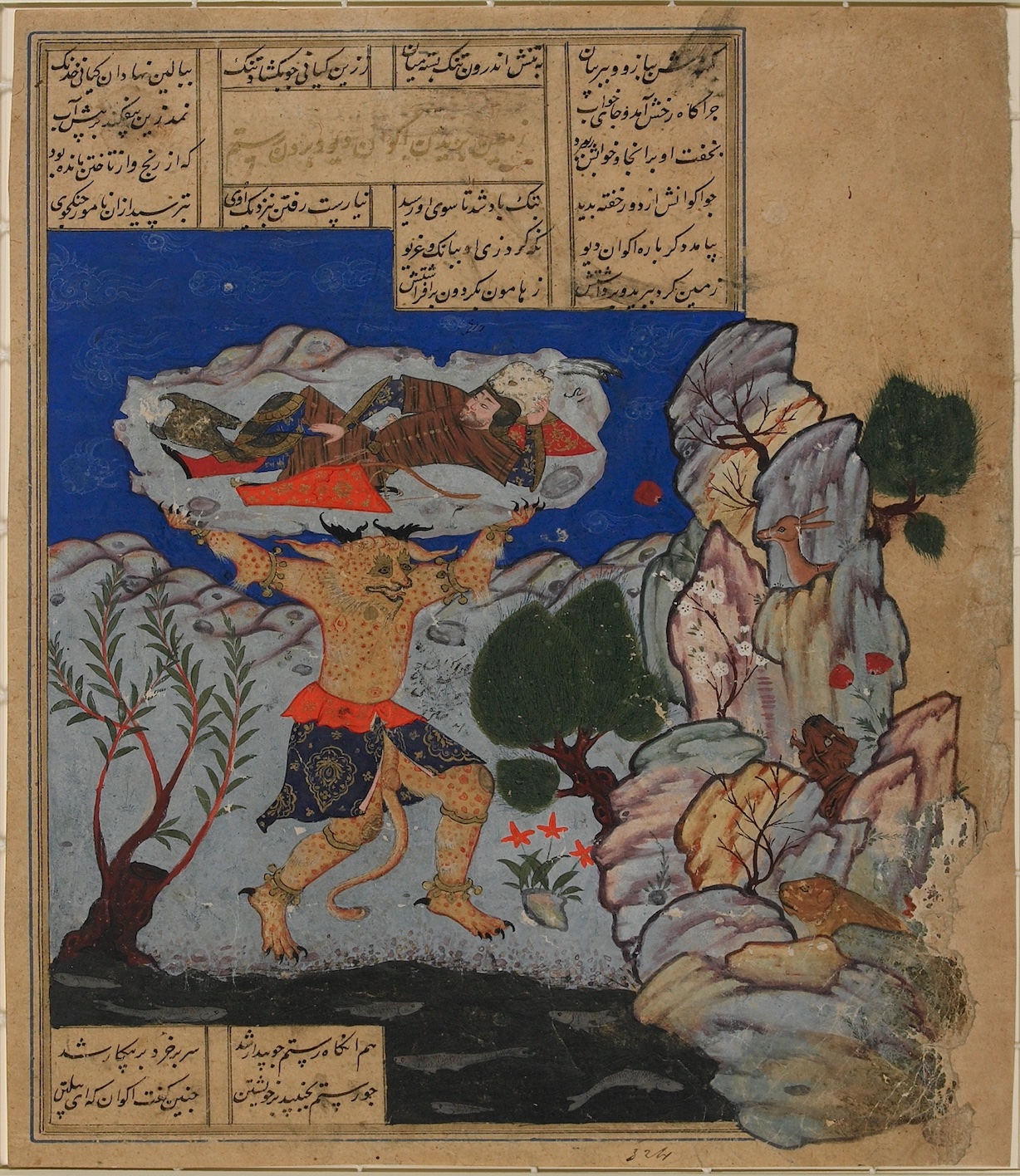
A depiction in the Shahname epic illustrating the Demon Div Akvan hurls Rustam into the Sea (Source: Public Domain).
Although some ancient Iranian texts suggest that Spenta Mainyu is a separate deity or perhaps a personified aspect of Ahura Mazda, later Iranian and Zoroastrian literature depict Ahura Mazda opposing Angra Mainyu directly. In the ancient Iranian religion, good and evil were determined by truth (arta) and lies (drauga).
Arta was believed to be the underlying order behind the cosmos as well as social order in society. Drauga existed in opposition to arta and was essentially falsehood and disorder, the basis for evil in ancient Iranian thought.
Zarathustra, the founder of Zoroastrianism, appears to have been one of the earliest prophets to develop an eschatological paradigm involving a universal savior who would eventually rescue the world from evil.
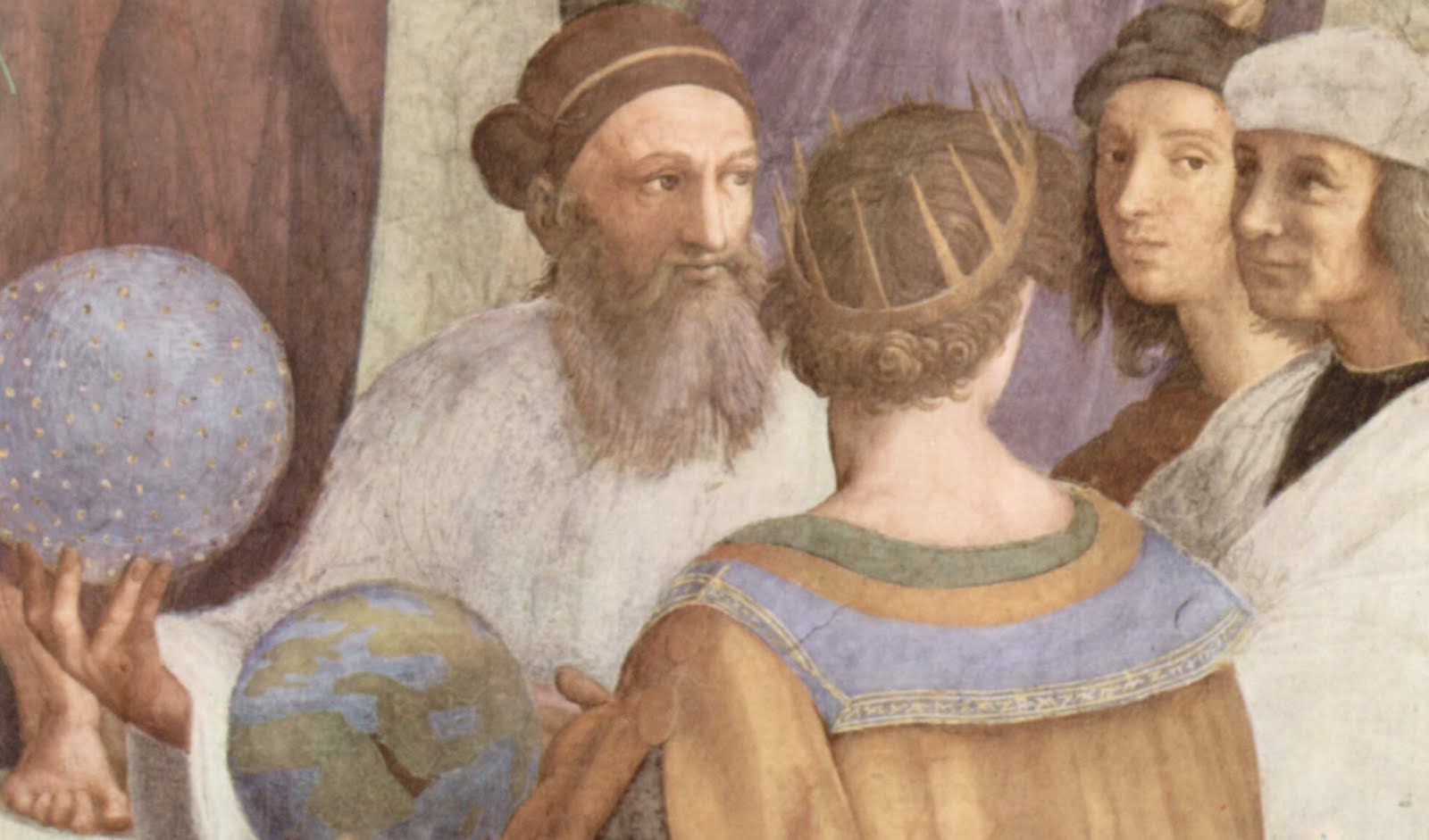
A detail of the painting “School of Athens” by Raphael 1509 CE (Source: Zoroastrian Astrology Blogspot). Raphael has provided his artistic impression of Zoroaster (with beard-holding a celestial sphere) conversing with Ptolemy (c. 90-168 CE) (with his back to viewer) and holding a sphere of the earth. Note that contrary to Samuel Huntington’s “Clash of Civilizations” paradigm, the “East” represented by Zoroaster, is in dialogue with the “West”, represented by Ptolemy. Prior to the rise of Eurocentricism in the 19th century (especially after the 1850s), ancient Persia was viewed positively by the Europeans. For more information see … Zoroaster – Forgotten Prophet of the One God …
The concept of arta may have been one of the features of ancient Iranian religion that attracted the Achaemenid kings to Zoroastrianism. The Achaemenid rulers could use the rhetoric of arta and drauga to their advantage by connecting their rule to the reign of Ahura Mazda over the cosmos. They were simply his intermediaries, enforcing arta in the social and political spheres.
Ancient Iranian Cosmology and Cosmogony
The ancient Iranian view of the cosmos is similar to the cosmological beliefs of other cultures in the same time period. The ancient Iranians believed that the universe consisted of three layers. The earth floated on a cosmic ocean and had a great mountain, Hara, at its center. Above the earth, there was the vault of the sky. Beyond the vault, or dome, there was a realm of endless light. Beneath the earth was a realm of darkness as well as chaos.
The ancient Iranian cosmogony is not completely understood, but it is defined by a continuous conflict between two opposing cosmic forces. At the beginning of history, there were two primordial twins. One killed the other and used his remains to make the universe, fashioning the sky out of his skull and the mountains of out of his bones. His flesh became the earth.
Another version of the myth says that the first man was named Yama. Yama was also the first king. During his reign, lies had not yet been released into the world and the world was idyllic. There was no death or old age. The world was in harmony without opposition. For example, there was no hot or cold. All was going well until lies were introduced into the king’s speech and Yama was overthrown by the tyrant Azhi Dahaka, or Dahaka the Snake.
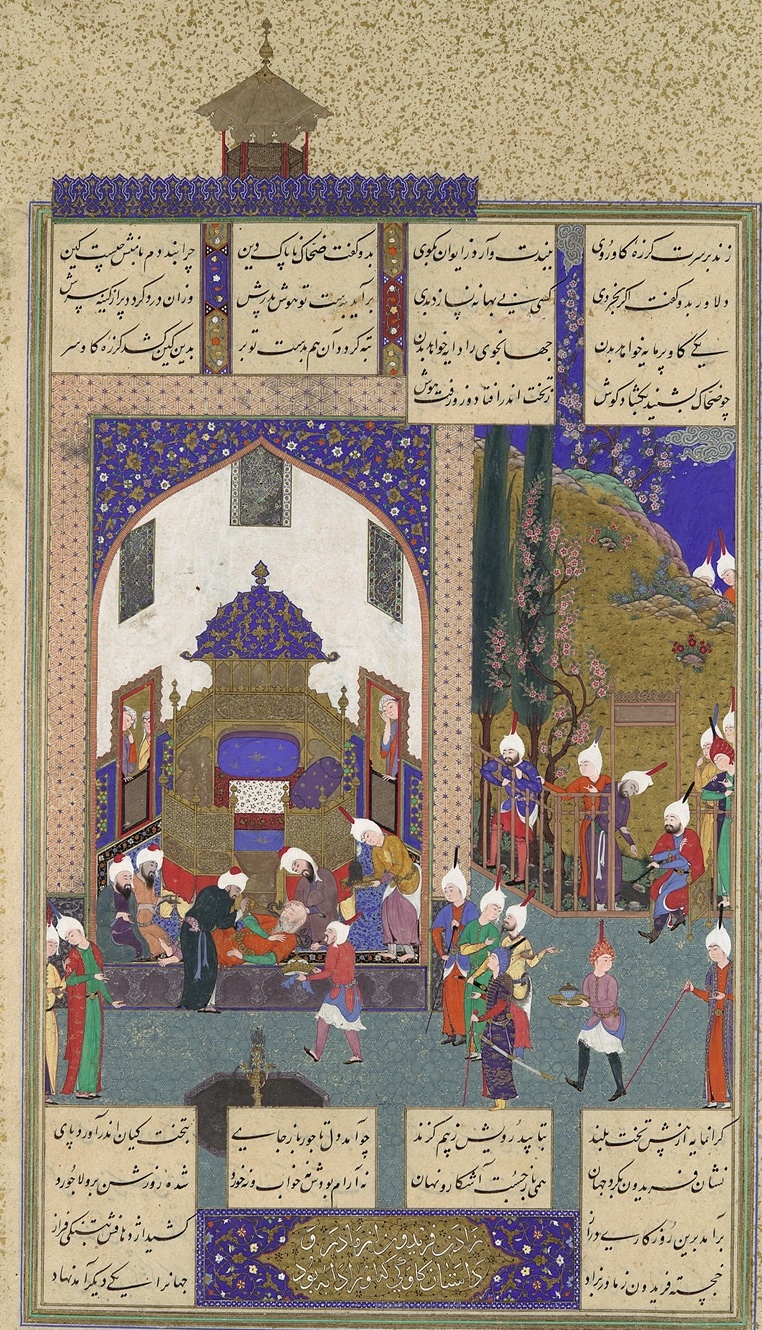
Persian illustration of “Zahhak Told His Fate” fron the Shahname of Shah Tahmasp (Source: Public Domain).
During Dahaka’s reign of terror, the world experienced ruin and chaos. Eventually, Dahaka was overthrown by the cultural hero Thraituana. Thraituana is believed to have been the founder of the kavis, an early, mostly legendary, line of Iranian kings.
Ahura Mazda and Mithra
Two of the major gods of the ancient Iranian religion were Ahura Mazda and Mithra. Ahura Mazda was believed to be the supreme God over all others. He was the creator of the universe and the originator of all truth and order. Although Ahura Mazda was not directly associated with the sky, he does seem to have taken on some of the roles of the sky god in the proto-Indo-European pantheon, Dyeus Pater. He was ruler of the gods and was paired with the earth goddess.
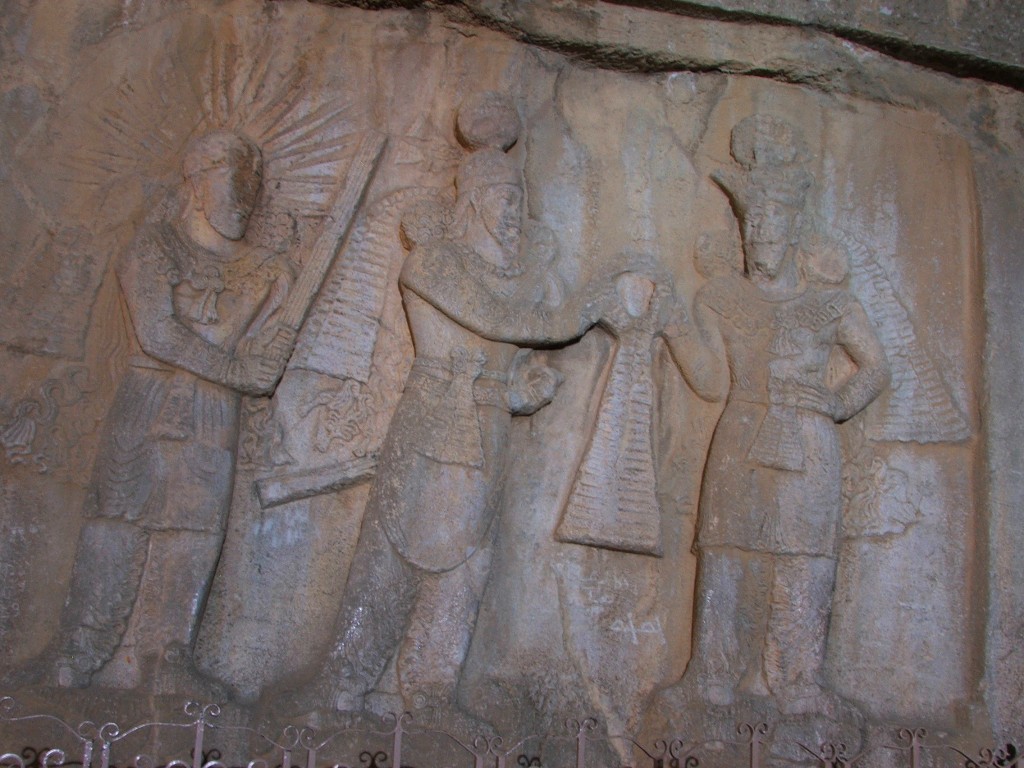
Investiture of Ardashir II (r. 379-383) (center) by the supreme God Ahuramazda (right) with Mithra (left) standing upon a lotus (Ghirshman, 1962 & Herrmann, 1977). Trampled beneath the feet of Ahura-Mazda and Ardashir II is an unidentified defeated enemy (possibly Roman Emperor Julian). Of interest are the emanating “Sun Rays” from the head of Mithras. Note the object being held by Mithras, which appears to be a barsum, or perhaps some sort of diadem or even a ceremonial broadsword, as Mithras appears to be engaged in some sort of “knighting” of Ardashir II as he receives the “Farr” (Divine Glory) diadem from Ahura-Mazda (Picture source: Shahyar Mahabadi, 2004).
In Zoroastrianism, Ahura Mazda became the only God worthy of worship. The daivas were reclassified as demons. The vocabulary and theological ideas of Zoroastrianism may have had an influence on the development of Judaism since some later Jewish writings echo Zoroastrian ideas. This is not to say that the ancient Jewish religion is not original, simply that some Zoroastrian theological concepts also fit into Jewish theology.
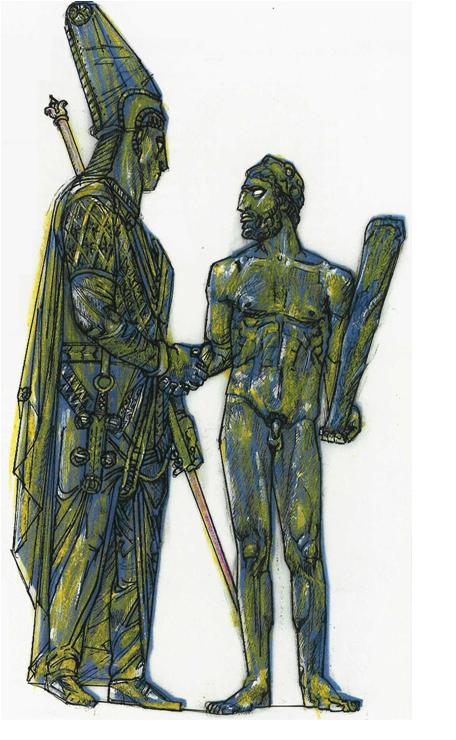
Nik Spatari’s drawing of the site of Eski Kale in Turkey (dated to circa 300 BCE) showing Mithras at left in Iranian attire shaking hands with the Hellenic God Zeus at right. This may be one of the first artistic depictions of the handshake symbolizing the “Payman” (pact).
Mithra is a god that was associated with the sun, specifically the first rays of dawn. In western Iran, he was identified directly with the sun. In fact, the name Mithra was used in western Iran to refer to the physical sun. At the same time, however, Mithra was also associated with ethics and not simply a sun god. For example, he was also the god of covenants who made sure that they were honored. His name, in fact, was also used to mean “covenant.” Mithra would later become the center of a Greco-Roman mystery religion, though the connections between the Persian Mithra and the later mystery religion are not certain.
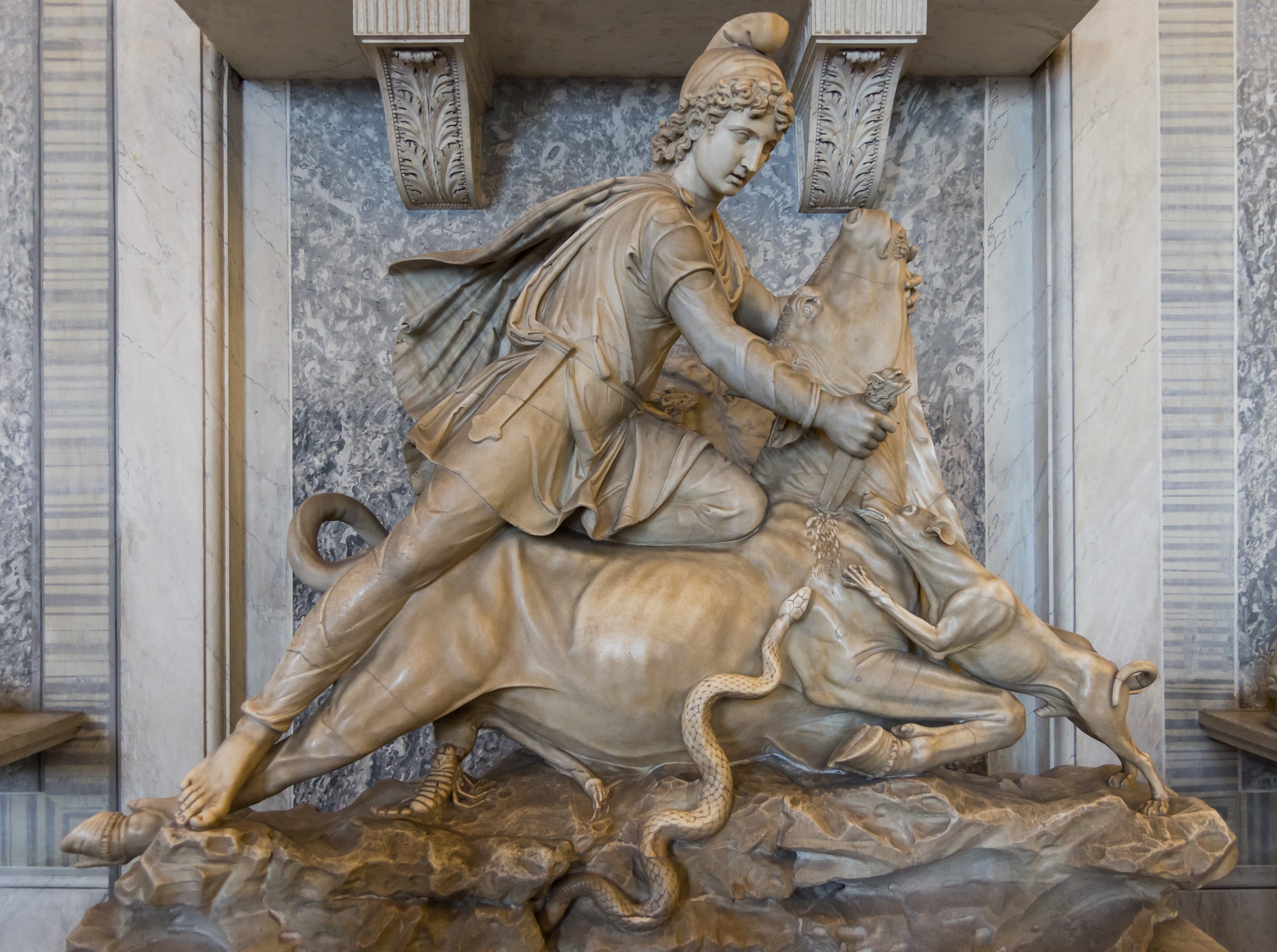
A Roman depiction of Mithras with Persian dress slaying the sacred bull at the Vatican Museum in Rome (Source: Eskipaper.com). Note the dog and serpent heading towards the gushing blood pouring down from the bull’s neck as the the scorpion heads towards the dying bull’s testicles.
Legacy of the Achaemenid Religion
Relatively little is known of the religion of the Achaemenids, but their popularization of the teachings of the prophet Zarathustra set a precedent for all later indigenous Persian dynasties. Until the conquest of Iran by the Muslims, Persia was a Zoroastrian land. The ideas of the prophet Zarathustra may have also influenced ancient Judaism. The spread of Jewish ideas helped accelerate the rise of Christianity and Islam , which became the two major religions of the former Roman Empire.
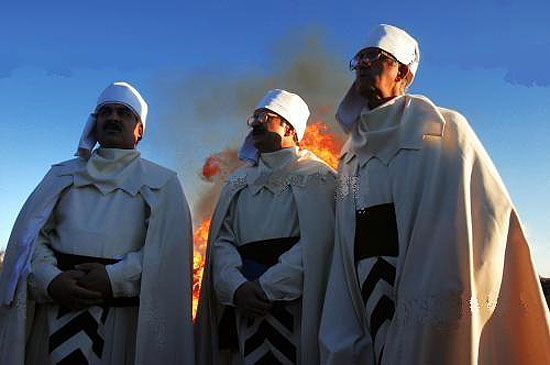
Zoroastrian magi from Kerman during the Jashne Sadeh ceremonies (Source: Heritage Institute).
Christianity profoundly affected Western, Slavic, and Byzantine civilization and Islam led to the rise of the Islamic civilization of the Middle East and North Africa. Considering the global influence of these civilizations, it could be said that most of the world’s population today follows the ways promoted by the Achaemenids in one form or another.



